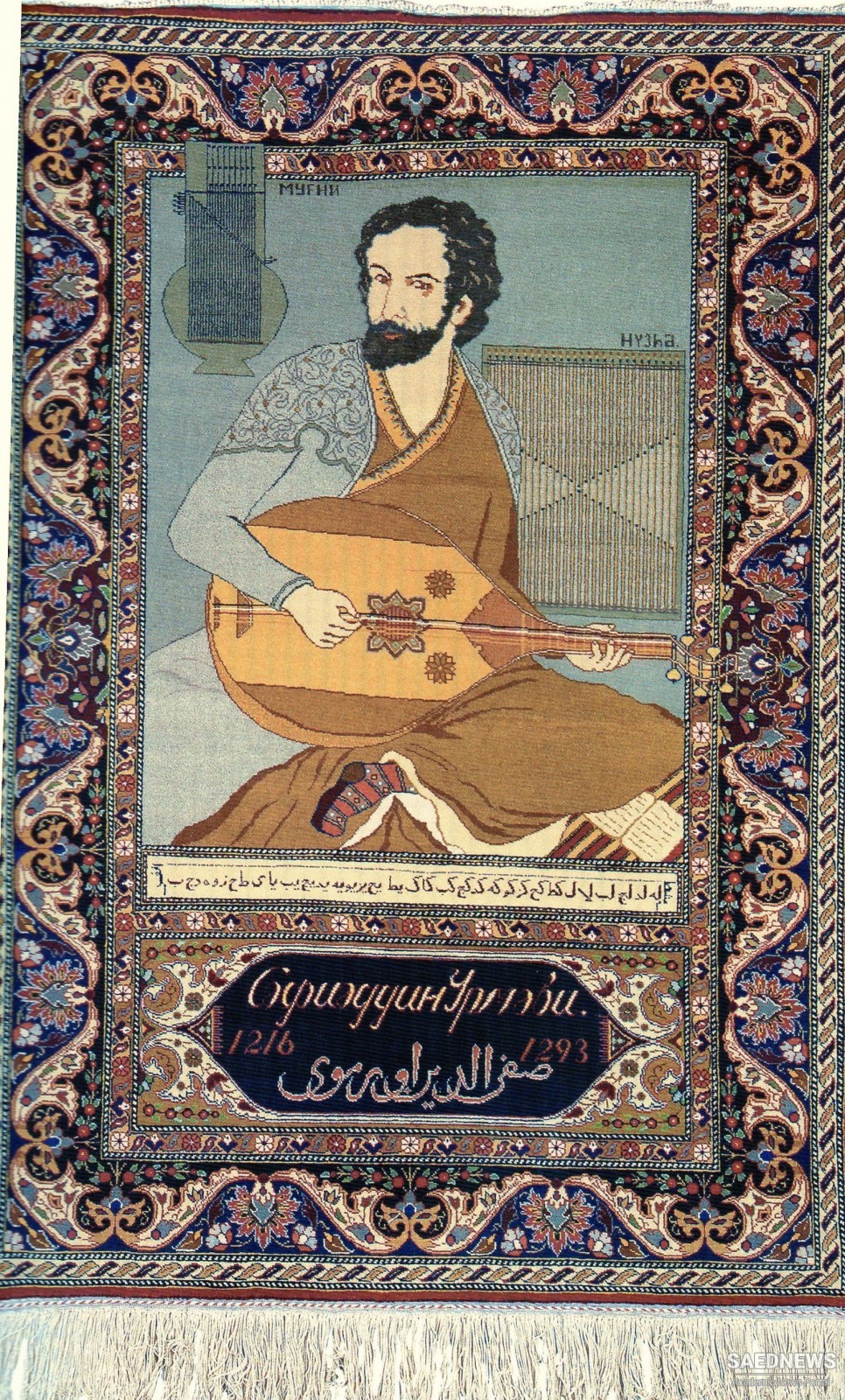The last theorist of the magnitude of al-Farabi and Ibn Sina in fact, for Persian music as distinct from Arabian, the most significant of the four—is the thirteenth-century writer Safi al-Din al-Mumin (d. 1294). Born at Urmiya, in the Persian province of Azerbaijan, Safi al-Din lived during a critical historical period : he was in the service of the last Abbasid caliph as well as the first Mongol ruler. The story is told that when Hulagu, grandson of Genghis Khan, was sacking Baghdad and slaughtering its inhabitants, he heard of this famous musician. Commanded to play before the Mongol conqueror, Safi al-Din so impressed Hulagu that his life was spared. From 1258 Safi al-Din was in the service of the Mongol court, and one of his great works on music, the Sharajjiya treatise, is dedicated to Sharaf al-Din Harun, son of Hulagu's vazir. Persian theorists throughout the late medieval period and even in the modern period have relied on the works of Safi al-Din, the Risalat ash Sharajjiya and the Kitab ad Aduar. The Persians continued to produce treatises on music during the Turko-Mongol period, but after Safi al-Din, the language was mainly Persian, rather than Arabic. In the fourteenth century, Qutb [sic] al-Din al-Shirazi (d. 1310), a pupil of Safi Al-Din, wrote what is perhaps the most abstruse mathematical treatise on music, the Durât ol Taj. Ali al-Jurgani (d. 1413), is the author of a well-known commentary on the works of Safi alDin.51 The end of the line of illustrious theorists is reached with Abd Qadir Ghaibi al Maraghi (d. 1435), whose works werecirculated widely throughout the Middle East. His Jami alAlhan contains the first extensive examples of notated Persian music. Maraghi provides a connection between Persian and Turkish music, for he served the Ottoman ruler Bayazid I, and his son and grandson produced treatises in the service of later Turkish sultans (Source: Harvard Introduction to Classic Persian Music).



 Philosophical Musings of Music in Persia in Early Islamic Era
Philosophical Musings of Music in Persia in Early Islamic Era














































